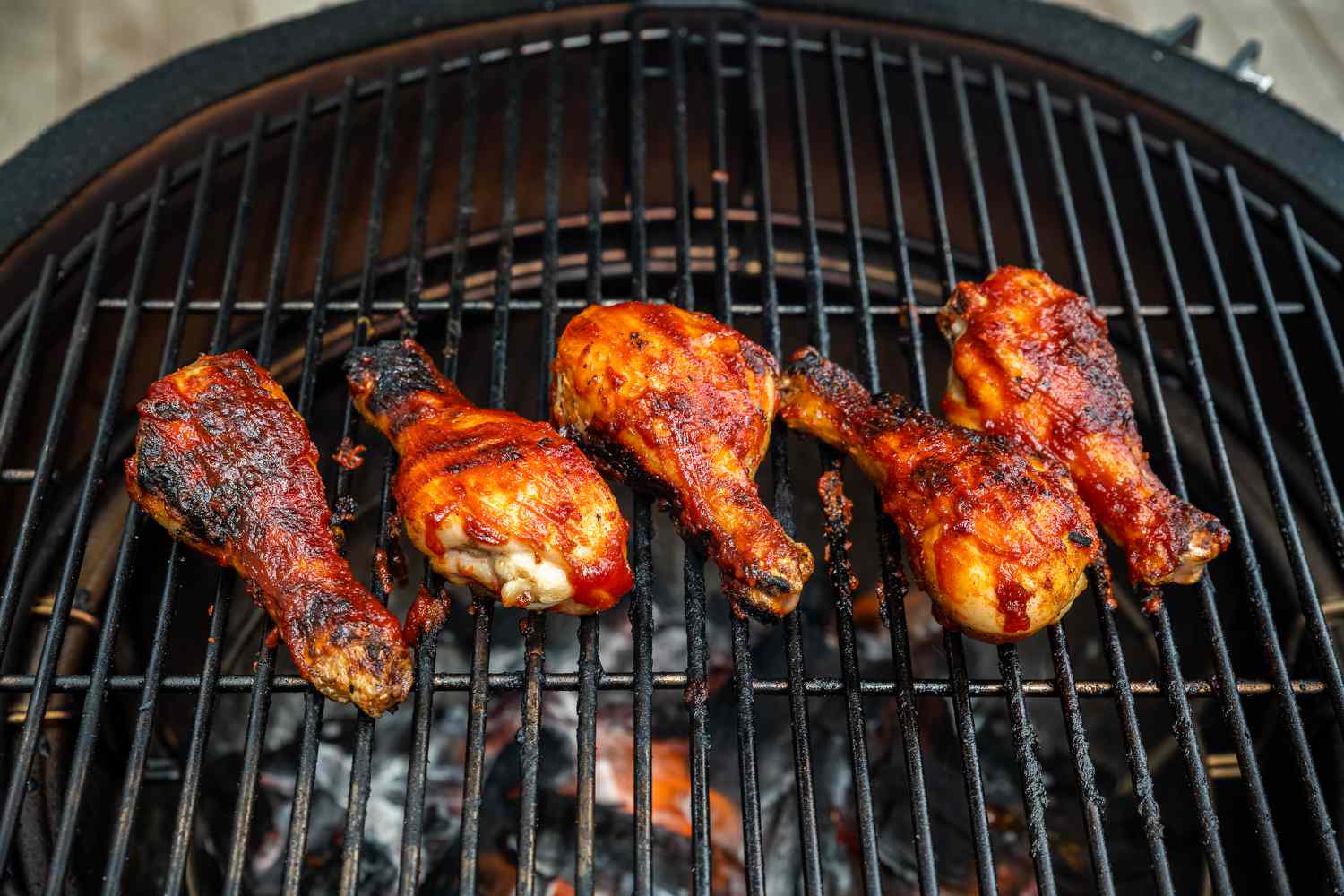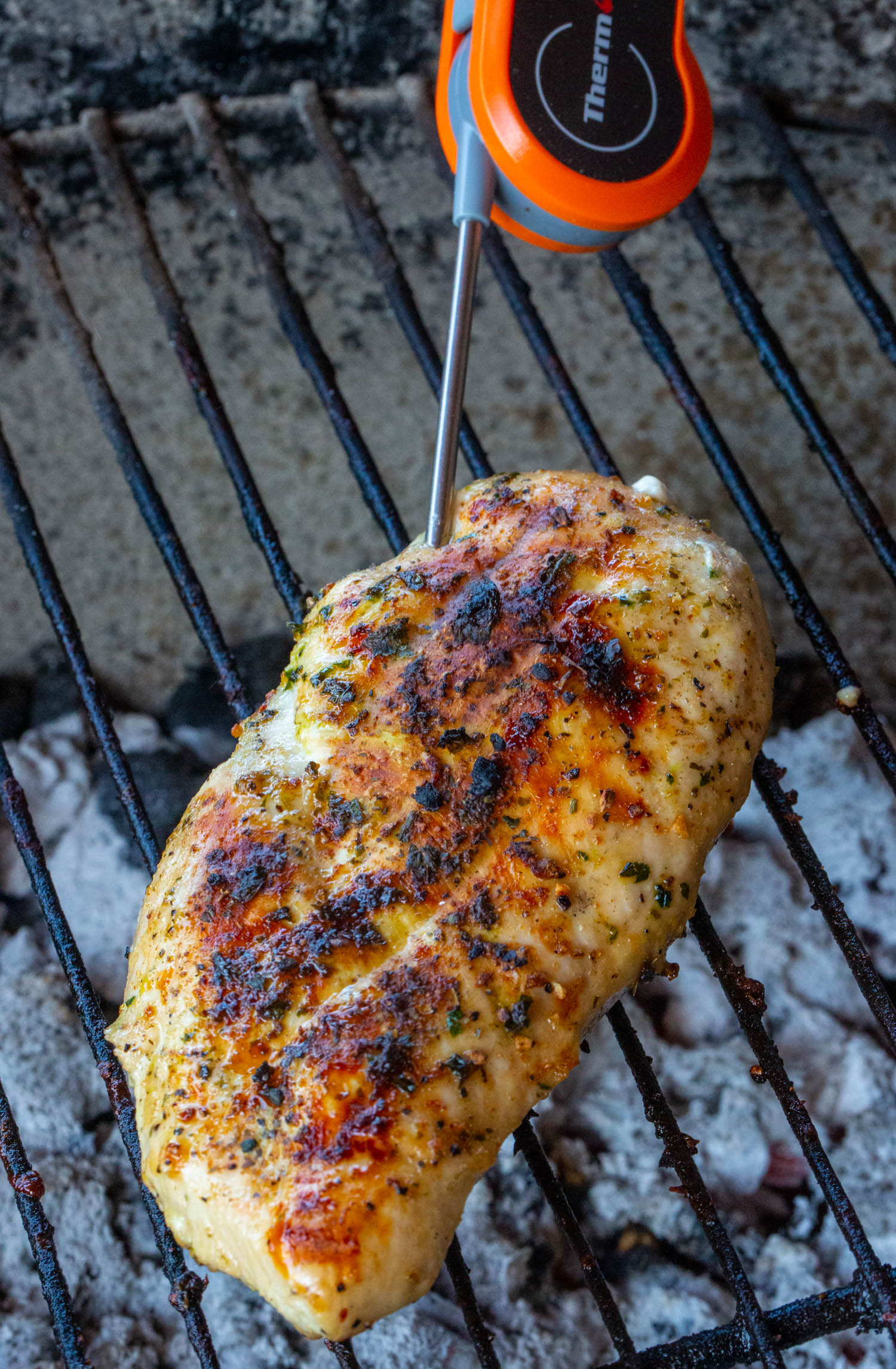Hey there grill masters! Today we’re diving into one of my absolute favorite BBQ topics – how long to cook chicken legs on a charcoal grill. If you’ve ever struggled with dried-out drumsticks or (yikes!) undercooked chicken I feel your pain. After years of trial and error at countless backyard cookouts I’ve finally nailed down the perfect technique for juicy, crispy-skinned chicken legs that’ll have your guests coming back for seconds.
The Quick Answer: Chicken Leg Grilling Time
For those who just want the straight answer: You’ll need about 30-40 minutes to grill chicken legs on a charcoal grill. But, flip them every 5-7 minutes until they reach an internal temperature of 165°F (74°C).
That’s the simple version but stick around if you want the full breakdown with all my hard-earned tips!
Setting Up Your Charcoal Grill for Success
Before we even talk about putting chicken on the grill, we need to get your charcoal setup right. This is seriously the foundation for perfect grilled chicken legs.
Two-Zone Fire: Your Secret Weapon
The most important technique you’ll need to master is two-zone cooking:
- Hot zone: Pile your charcoal on one side of the grill for direct, high-heat cooking
- Cool zone: Leave the other side empty for indirect cooking
This setup gives you incredible flexibility – you can sear for crispy skin then move to gentle cooking to get the inside perfect without burning the outside.
Getting the Temperature Right
For chicken legs, aim for a grill temperature of 350-400°F (175-200°C) in the indirect heat zone. How do you know when you’re there?
- Use a grill thermometer (most reliable)
- Hand test: Hold your hand about 5 inches above the grate – if you can keep it there for 5-7 seconds, you’re at the right temp
I personally prefer lump charcoal over briquettes for the flavor and higher heat, but either will work fine!
Prep Work: Setting Your Chicken Up for Flavor
Selecting Quality Chicken Legs
This might seem obvious, but it makes a huge difference! Look for:
- Plump, fresh legs
- Smooth skin without blemishes
- Similar sized pieces (for even cooking)
I’ve found that free-range or organic chicken just tastes better, but go with what fits your budget.
To Marinate or Dry Rub?
Both methods are awesome, and I often switch between them depending on my mood:
Quick Marinade Recipe:
- ¼ cup olive oil
- 2 tablespoons lemon juice
- 3-4 cloves garlic, minced
- 1 tablespoon herbs (thyme, rosemary, etc.)
- Salt and pepper to taste
Marinate for at least 30 minutes, but overnight is even better.
Simple Dry Rub Recipe:
- 2 tablespoons paprika
- 1 tablespoon garlic powder
- 1 tablespoon onion powder
- 1 teaspoon cayenne (adjust to taste)
- 2 teaspoons salt
- 1 teaspoon black pepper
Pro tip: Always pat chicken legs dry before applying a dry rub! This helps the skin crisp up beautifully.
The Grilling Process: Step-by-Step
Alright, now for the main event! Here’s exactly how to grill those chicken legs to perfection:
- Light the charcoal using a chimney starter for even burning
- Arrange coals on one side of the grill for your two-zone setup
- Clean and oil the grates to prevent sticking
- Place chicken legs on the indirect heat side (the cool zone)
- Close the lid to create an oven-like environment
- Flip every 5-7 minutes for even cooking
- Check temperature after about 25 minutes
- Continue cooking until internal temp reaches 165°F (74°C)
- Optional: Move to direct heat for the final 2-3 minutes to crisp skin
- Rest for 5-10 minutes before serving
The entire process usually takes 30-40 minutes, but remember: temperature, not time, is the real indicator of doneness!
Common Problems & How to Fix Them
Flare-Ups
Chicken skin has fat that can cause flare-ups. If you see flames:
- Immediately move chicken to the cool zone
- Keep a spray bottle of water handy for emergencies
- Trim excess fat before grilling to prevent issues
Uneven Cooking
If some legs are cooking faster than others:
- Rotate positions on the grill
- Move faster-cooking pieces to cooler areas
- Consider grouping chicken legs by size next time
Skin Sticking to Grates
This is super annoying! To prevent it:
- Make sure grates are clean and well-oiled
- Don’t try to flip chicken too early
- Let the meat naturally release before turning
How to Know When Chicken Legs Are Done
There’s no substitute for a good meat thermometer when it comes to chicken. Insert it into the thickest part of the leg (avoiding the bone) and look for:
- Minimum safe temperature: 165°F (74°C)
- For extra juicy legs: 170-175°F (77-79°C)
If you don’t have a thermometer, look for:
- Clear (not pink) juices when pierced
- Meat that pulls away from the bone easily
- No pink meat, especially near the bone
But seriously, just get a thermometer. They’re cheap and will save you from both dry chicken and food poisoning!
Taking Your Chicken Legs to the Next Level
Once you’ve mastered the basics, try these enhancements:
Adding Smoke Flavor
Soak wood chips (hickory, apple, or mesquite work great with chicken) for 30 minutes, then add them to your charcoal for an amazing smoky flavor.
Glazing Techniques
If you want to add a sauce or glaze:
- Wait until the final 10-15 minutes of cooking
- Apply in thin layers, allowing each to set
- Watch carefully to prevent burning (especially with sugary sauces)
What to Serve with Your Grilled Chicken Legs
Complete your BBQ with these perfect sides:
- Grilled corn on the cob
- Coleslaw
- Potato salad
- Baked beans
- Simple green salad
- Mac and cheese
FAQ: Everything Else You Need to Know
Can I use a gas grill instead?
Yes! Use similar temperature settings (350-400°F) and create a two-zone setup by turning off one or more burners. The flavor will be slightly different without the charcoal smoke.
How do I prevent chicken legs from drying out?
- Don’t overcook them (use a thermometer!)
- Consider brining before grilling
- Let them rest after cooking
- Use the two-zone method instead of direct heat the whole time
Is it safe to eat chicken that’s slightly pink near the bone?
If your thermometer confirms the chicken has reached 165°F, a slight pink tinge near the bone is sometimes normal. However, if in doubt, cook it a bit longer.
Can I grill frozen chicken legs?
While you technically can, I really don’t recommend it. Frozen legs cook unevenly and often burn on the outside while remaining undercooked inside. Thaw in the refrigerator overnight for best results.
How should I store leftover grilled chicken legs?
Store in an airtight container in the refrigerator for up to 3-4 days. They’re great cold, or reheat gently in a 300°F oven until warmed through.
Final Thoughts
Grilling chicken legs on a charcoal grill isn’t just about time – it’s about technique, temperature control, and knowing when your chicken is perfectly cooked. With the steps I’ve outlined, you’ll be serving up crowd-pleasing drumsticks at your next BBQ!
Remember the key points:
- Two-zone fire setup
- 30-40 minutes cooking time
- Regular flipping
- Internal temp of 165°F
- Rest before serving
I’ve made plenty of mistakes over the years with my grilling (burned chicken, anyone?), but that’s how you learn! Don’t get discouraged if your first attempt isn’t perfect – each time you fire up that grill, you’ll get better.
Now get out there and grill some awesome chicken legs! And hey, if you have any other grilling questions or want to share your own tips, drop them in the comments below. I’d love to hear how your chicken turns out!
Happy grilling!

When Is a Charcoal Grill Ready for Grilling?
From here, it’s just a matter of knowing when to place your chicken on the grill and every chef I know uses the hand test trick. Let me teach you!
Here are some good marinade options that you likely already have:
- Bottled Italian or vinaigrette dressings. (Honestly, my favorite way to get rid of nearly empty bottles of salad dressing.)
- Fresh herbs like parsley, chives, rosemary, thyme, sage, chervil, green onion, basil, cilantro
- Lime or Lemon Juice, Pineapple Juice
- 3 Tablespoons oil to bring it all together

When you know your grill is ready, you can place your chicken on the grill but first, it’s a good idea to apply a coat of oil to the grill grates. This will help keep your chicken from sticking. (By the way, this is a good practice with anything you want to grill.)
To do this, using tongs pick up a ball of paper towel coated with a high smoke point oil (not olive oil, avocado, coconut, or canola oil is good) and wipe the grill grates with a thin coating of oil.
Note: You can also marinate your chicken before grilling for amazing flavor and interest. (Here is our favorite recipe for fajita marinade that makes the best chicken.) This step may not be necessary if the chicken has been marinated in an oil-based marinade, or if the chicken recipe consists of a dry rub held on by a coat of oil.
It doesnt hurt to grease the grill grates anyway. The cooking grate will never stick to the chicken if both are well oiled.
